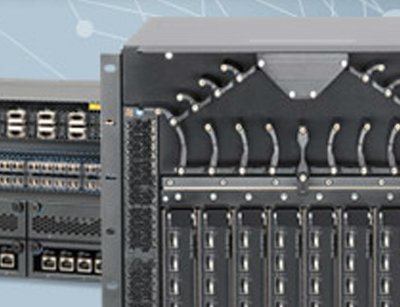Juniper Networks has made its QFabric model more attractive to the mid-sized and space constrained data center markets, releasing a version specifically for smaller players and reducing the amount of space taken by cables by 63% with 74% less cables used.
A year after releasing QFabric, first designed for larger data center customers, it has released the QFX3000-M QFabric System, also for large data centers and AFX3000-G for mid-sized operators.
By reducing the amount of cables with the QFX3000-M, Juniper said it has come up with a solution that can be used in new 10GbE data center pods and other space-constrained environments.
It said it has also based the releases on a fixed form-factor interconnect (the QFX3600-1) which allows customers to scale from 48 10GbE ports up to 6,144 10GbE ports using the QFX3000-G system.
The QFX3000-M also offers server-to-server traffic speeds of three microseconds latency.
Juniper Networks EVP and general manager of Data Center Business RK Anand said the solution provides the basic building blocks for companies to scale to meet demands for storage convergence, big data and virtualization.
“Juniper is giving mid-size enterprise CSOs the foundation and building blocks to enable management simplicity, the ability to scale without adding complexity and high application performance in their data centers,” Anand said.
To make movement across the QFabric models easier, Juniper has carried out enhancements to its EX8200 switches running Virtual Chassis technology. Using these, customers can manage up to four data center cores separated by as much as 80km as a single switch.
It will also release the QFX3600 40GbE top-of-rack switch in the second half of 2012.
Gartner distinguished analyst Mark Fabbi said Juniper’s release follows the trend by data center network operators to “right-size” networks with higher performance form factors.
“While a segment of the market requires massive scale, for most enterprises, dense, virtualized computing platforms are driving a requirement for smaller, higher performance form factors within the data network architecture,” Fabbi said.
The University of Auckland in New Zealand and Jan Yperman Hospital in Belgium are two customers already using the solution. Both say they are using it to innovate across their network, achieving low latency performance and allowing for a path to upgrade as required.
Last month Juniper Networks also announced enhancements to its Mykonos Web Security Software to strengthen its protection against attackers and hacking techniques to provide against more threats.
It can stop attackers from using compromised credentials, even when a password has been guessed and defend against directory traversal attempts used to map websites. It also integrates a large amount of third-party vulnerability protection software.

